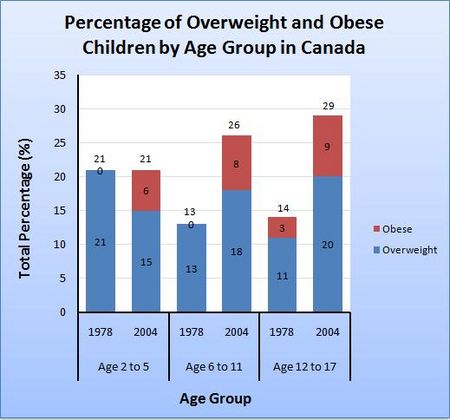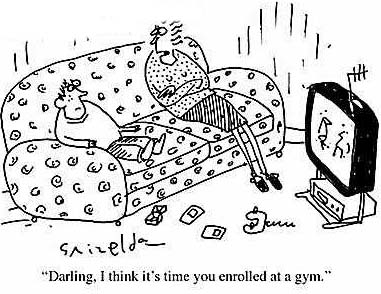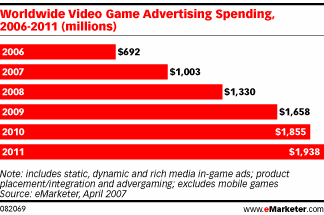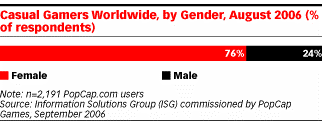Courses/Computer Science/CPSC 203/CPSC 203 2008Winter L03/CPSC 203 2008WinterL03 TermProjects/T19 Group 1 -Video Games Stimulating Your Mind...Or Your Weight?
Contents
Team Name
Project Title
Obesity in Children & Video Gaming
Group Members
Katie Chung, Calvin Chan, Jer Erhardt, Kristie Schafer
Topic
Obesity in Children and Effects from Video Games Today
Initial Project Statement
Childhood obesity is a growing health concern and is continuing to rise. Experts in highly developed countries, especially in the United States, identify their situation of obesity as an epidemic. The growing trend today is the younger population’s adaptation to an inactive lifestyle through television, computers, and video games. We will explore the variety of ways in which video gaming technology affects obesity in children.
Argument
- How is video gaming affecting obesity?
As the world of video game consoles evolve, children are spending increasing amounts of time in front of the television playing games. Kids are weighing more but moving less. Instead of being in the outdoors or playing sports, children sit in front of their television set gaming. Recent technological advances have raised many questions; are these new technologies beneficial or harmful to a child's development? Are video games a cause of child obesity? Who is to blame and what possible solutions are there to prevent obesity?
Definitions
Obesity is defined as a medical condition in people who have excess body fat compared to what is healthy for his/her height. One of the primary causes of obesity is when an individual consumes more food energy than what is required in the body for the day’s activities, including work and exercise, as a result excessive body fat accumulates. Research has proven that there are many contributing factors which can cause an individual to become obese. Some of these factors include activity levels, genetic make-up and diet, environment, economic, psychological, social and biological. Obesity presents numerous problems for the child. In addition to increasing the risk of obesity in adulthood, childhood obesity is the leading cause of pediatric hypertension, is associated with Type II diabetes mellitus, increases the risk of coronary heart disease, increases stress on the weight-bearing joints, lowers self-esteem, and affects relationships with peers.
One of the most common methods for calculating an individual's body fat content is derived from using their height and weight to figure out their body mass index. The Body Mass Index (BMI)is a system used to compare a person's height to their weight using the formula: BMI = weight in kilograms / height in meters²
Interpreting BMI results
Underweight less than 18.5
Normal weight between 18.5 & 24.9
Overweight between 25 & 29.9
Obesity greater than 30
According to the National Institutes of Health, individuals with a Body Mass Index greater than 30 are considered to be obese. It has been found that the higher the BMI gets, so does the level of risk for health problems. A BMI of 20 to 25 is ideal, with the lowest health risks. Generally speaking a man is obese when body fat accounts for 25% of his total mass; a woman is obese at 30%. People with severe cases of obesity may be referred to as "morbidly obese". Obesity increases the risk of contracting heart and circulatory disease, stroke, obstructive breathing disorders, cancers, diabetes, and possibly vision problems. In addition, because of their youth, obese children have a long duration to develop these problems.
Background & History
Child obesity rates have increased tremendously over the past two and a half decades.
In 1978, 12% of Canadians aged 2 to 17 were overweight, and 3% who were obese (total of 15%). By 2004, those aged 2 to 17, 18% were overweight and 8% were obese (total of 26%). Over 1/4 of children in Canada are overweight or obese.
Obesity and a sedentary lifestyle are the leading cause of heart disease - the number one killer of Canadians.
From the years 1981 to 1996 there was a 92% increase in the number of overweight boys, and 57% increase in girls. In 1992 only 2% of children were diagnosed as obese. Today about 10 per cent of six-year olds and 17 percent of 15 year olds are considered to be obese.
The most effective method in preventing and combating obesity is physical activity and maintaining a healthy diet.
Researchers have predicted that by the year 2050, 26 per cent of children will be obese. Along with this, life threatening problems such as heart disease will increase 20 per cent, diabetes (type II) will rise to 70 per cent and a 30 per cent increase in strokes is likely to occur.
Issue
Video Gaming
Video and computer games are part of a booming market. Industry sales have more than doubled since 1996 to $7.4 billion a year. Only a third of all video game players are under eighteen years of age. However, gamers of this demographic are said to play an average of at least 2-3 more hours per week than older players. Almost two thirds of parents believe that gaming is a positive part of their child’s life. Studies show that that chances of being obese goes up as screen time (playing video games, watching TV and sitting on a computer) increases.
The average child, age 8 to 12 plays about 13 hours of screen time playing video games per week, while ages 13 to 18 year old plays at least 14 hours per week (according to a survey). A recent study in the US of 1178 children, found that approximately 9 percent of child gamers are addicted to playing video games. Forty-four percent between the age of 8 to 18 reported their friends as being addicted to video games.
Television
Television has remained one of the most prevalent types of media influences in the lives of children. According to a survey done by the Canadian Teacher’s Federation, television watching remains a daily past time for almost 75% of Canadian children. It has been argued that children who sit in front of a television for more than two hours daily tend to be at a higher risk of being out of shape, overweight, having high cholesterol or becoming a smoker. Two researchers that have been involved with these types of studies, Dr David Ludwig and Steven Gortmaker, have found that obesity is a complex condition with numerous genetic, environmental and psychosocial contributing factors. However, their studies have found that by limiting television watching of young children and banning food advertisements aimed at children are crucial to prevent another generation from being programmed to become obese.
Who's To Blame?
Researchers attribute inactive lifestyles, diet and genetics as the driving force behind this new epidemic. A recent survey of U.S. parents asked why they thought their children were overweight. 10% of parents named fast food companies, 10% blamed the child and about 7% accused television and media advertisements. Two thirds of parents blamed themselves. Today, with both parents busy working their jobs majority of the day, many of them would rather buy take-out or fast food for their kids and buy them video games to play after eating, instead of playing tag after a home cooked meal.
Interesting Facts
- The direct costs of obesity in Canada was $1.8 billion in 1997
- Babies that were brest-fed are more able to control food intake and follow internal hunger signals, thus helping to prevent excessive weight gain
- There are now more overweight people than undernourished people.
- Over half of First Nations children in Canada are obese or overweight.
- Children with an obese parent are more likely to be overweight or obese.
- Children from low-income families have a greater likelihood of being overweight or obese (Parents perceptions that their neighborhoods are not safe so children stay indoors)
Solutions
What is being done to stop this obesity epidemic?
Schools are improving physical education programs, providing healthy food choices, and providing general health awareness.
Parents need to be supportive of their children, model healthy diets, promote daily physical activity, discourage inactivity, and become a positive influence on their children. They should also seek the advice of doctors or other professionals if they need help.
Video game companies are also doing their part in the fight against obesity:
Recent advances: The Future of Active Gaming
Video game companies are now bringing active gaming to their consoles. Nintendo and Sega first started the initiative to take gaming to a new level, but unfortunately its popularity never caught on to the gaming consumers.
- Arcade - Dance Dance Revolution
When Dance Dance Revolution (created in Japan for arcades in 1998) made its way from arcade to the home version, it had a major turn. Factors such as the convenience at home (instead of going to the arcade and paying for every play) to play,comfort to practice at home, relatively inexpensive soft pads, compatibility with the Playstation and exercising while having fun, helped make its way through the globe for its popularity status. The home version also had a program for a workout mode, keeping track of the calories burned during the session.
- Sega Dreamcast - Samba de Amigo
Samba de Amigo is a rhythm game that was released out in the year 2000 for Sega Dreamcast game console. The controllers are manufactured to look like the instrument maracas. The player must shake the maracas to match the beats shown on the screen at three different heights. The more intense the levels get, the more the player has to shake the maracas. The catchy soundtracks and evolution made its status rise and is one of the most sought after games for the Dreamcast console. This kind of game requires endurance and works the upper arm and for a cario workout.
The Nintendo Wii is now coming up with a new version for their console due to the popularity of the game in the past.
- Playstation 2 - Sony's Eye Toy
Eye Toy created for Playstation 2 creates a whole new experience for gaming. Created in 2002 by Logitech, this small USB camera sits on top of the game system and senses movements, color, and sound allowing players to interact with games. Games designed for Eye toy include games such as Eye Toy: Play, Eye Toy: Play Sports, Eye Toy: Kinetic Combat, etc. These games are very interactive, allowing the player to get exercise as well as having fun. It senses body movements such as your arm and legs allowing the player to be able to punch, kick in the games. Another positive feature for the Eye toy games is that it has a designed workout program that meets the individuals daily exercise needs, to be fit and lose weight. Overall, Eye Toy can be a great way to have fun and get exercise at the same time.
- Fisher-Price - Smart Cycle Physical Learning Arcade System
Even small children play video games! The Smart Cycle Physical Learning Arcade System by Fisher-Price is aimmed at ages 3-6 years. This toy combines gaming with excercise and education. It perfect for helping parents get their video-game playing kids to be more active. The child pedals on a stationary bike to explore various environments and race against other cars. Other game modes allow children to learn about letters, colours, shapes, and numbers.
- Nintendo Wii
The Nintendo Wii was created in 2006 and is now one of the most popular gaming systems today. Its primary controller is a ‘wii remote’ creating an innovative, dynamic and unique experience way of gaming. It involves the player to move around, swinging their arm which can be a benefitting, fun way of exercising. The Nintendo wii is not just for a specific range of people. This console can be for everyone of any age. Instead of normally pressing buttons on a controller, why not get up and play with the Nintendo Wii which is just as fun but can create a workout for you.
- Nintendo Wii - Wii Sports
Wii Sports, released in November 2006, is included with the purchase of the Nintendo Wii Console System (except in Japan). It and is a compliation of five sports games. These include baseball, boxing, bowling, golf and tennis. The game is designed to be simple and fun, and it shows off the capabilities of the Nintendo Wii controller (Wii remote). You mimic the motions with the controller as if you were actually playing the sport. For example, you swing the controller as if it was a baseball bat, tennis racquet, golf club, etc.
- Nintendo Wii - Wii Fit
Wii Fit was relased in Japan in December 2007. It comes with a Wii Balance Board which can detect shifts in weight. This inovative Balance Board will allow players to perform a variety of activities. This includes everything from yoga and aerobics to skiing. Release in Canada is scheduled for May 2008.
- Playstation/Xbox/Wii/PC - Guitar Hero
Guitar Hero, named 2005 Music Game of the Year, is the wildly popular video game that allows players to imitate playing rock songs on a controller in the shape of a guitar. It has since released various sequels, including Guitar Hero II (2006) and Guitar Hero III: Legends of Rock (2007).
- Playstation/Xbox/Wii - Rock Band
In Rock Band, gamers are offered 4 instruments (lead guitar, bass guitar, drum and microphone) to become a virtual band. Players play/sing notes in accordance to what is shown on the screen. Rock Band is developed by Harmonix Music Systems and was originally released for the Playstation 3 and Xbox 360 in November 2007. The Nintendo Wii version will be release date is planned for June 2008. Players using the Rock Band's drum kit can burn upwards of 500 calories an hour!
With such advance of technology and a new generation of gamers who are more open minded, the gaming industry has reached out to a broader audience spans from just children or teenagers to family fun. More interacting and movement around on a daily basis rather than pressing buttons while sitting down helps to maintain a better balance between fun and health.
Future: Video Game Advertising
Video game advertising is expected to grow substantially within the next five years. Worldwide spending will increase from $692 million (2006) to 1.9 billion (2011), with half of this spending involving the US only. The reason for this increase in spending is mainly because game consoles such as the Nintendo Wii have widened its audience including women and older gamers. Majority of the "hardcore" gamers are still the younger males, but research found that casual gamers are dominated by older women with seventy-six percent.. This shift indicates advertisers to continue to target children to encourage their parents to buy them video games, but now adults are buying it for themselves.The Associated Press and AOL studies found that 30% of gamers spend less than five hours per week watching television, while 33% of gamers devote more than four hours per week playing video games. This implies that the shift in consumer behaviour of viewing television to playing video games, will give incite to advertisers to spend their budget on video game advertisement.
Conclusion
Traditional video games are just a contributing factor to children's inactivity; they are not solely responsible for their health problems. The new generation of gaming is encouraging active movement and is a step in a positive direction. Even so, there is still a huge market for video games where there is no movement except from the players fingers. These games are not exclusively causing obesity and other child weight issues, but they are negatively contributing. Another aspect to consider along with these problems of idleness is a child's diet. Healthy eating is imperative in overcoming these health concerns. There must be new lifestyle changes resulting in greater physical activity and wiser food choices. Parents can impact their child's health if they are involved by setting standards of having a balanced diet with and setting limited amounts of time in front of the television. Ultimately, decisions that are made in the child's developing stages will shape and have a huge impact on them for the future.
References
Katie
http://encarta.msn.com/encnet/refpages/RefArticle.aspx?refid=761576312 http://www.linkroll.com/obesity-help/the-devastating-effects-of-childhood-obesity.php -http://www.zimbio.com/member/venturist/articles/858007/Technology+Childhood+Obesity+Get+Child+Away -http://ezinearticles.com/?Some-Effects-of-Childhood-Obesity&id=459408 http://ft.csa.com.ezproxy.lib.ucalgary.ca/ids70/resolver.php?sessid=eb610326fd949699c651022b49bce823&server=www-mi7.csa.com&check=e260d195afcf91465540bd30130fe0f9&db=sagepol-set-c&key=0002-7162%2F10.1177_0002716207308399&mode=pdf http://ft.csa.com.ezproxy.lib.ucalgary.ca/ids70/resolver.php?sessid=eb610326fd949699c651022b49bce823&server=www-mi7.csa.com&check=8163ca34c53b8802323ef963cb8b6352&db=sagepol-set-c&key=0002-7162%2F10.1177_0002716207309940&mode=pdf http://find.galegroup.com.ezproxy.lib.ucalgary.ca/itx/retrieve.do?contentSet=IAC-Documents&resultListType=RESULT_LIST&qrySerId=Locale%28en%2CUS%2C%29%3AFQE%3D%28JN%2CNone%2C39%29%22Australian+Journal+of+Early+Childhood%22%3AAnd%3ALQE%3D%28DA%2CNone%2C8%2920030901%24&sgHitCountType=None&inPS=true&sort=DateDescend&searchType=PublicationSearchForm&tabID=T002&prodId=AONE&searchId=R4¤tPosition=7&userGroupName=ucalgary&docId=A109666137&docType=IAC http://economics.uchicago.edu/download/Obesity_Thesis_Redux.pdf http://www.mediafamily.org/research/2004_VGRC.pdf http://www.blackwell-synergy.com.ezproxy.lib.ucalgary.ca/doi/full/10.1111/j.1469-8986.2007.00622.x Preventing Childhood Obesity: Health in the Balance http://books.google.com/books?hl=en&lr=&id=2SUDUbGquk4C&oi=fnd&pg=PA1&dq=video+games%2Bchildhood+obesity&ots=MJQLVUWoV-&sig=p5hpmA66zQIKodL_to-AyqkLWZk#PPA7,M1 http://ft.csa.com.ezproxy.lib.ucalgary.ca/ids70/resolver.php?sessid=eb610326fd949699c651022b49bce823&server=www-mi7.csa.com&check=8dbce8cde398df6a1c9c5273253c154f&db=sagepol-set-c&key=0002-7162%2F10.1177_0002716207311669&mode=pdf http://www.sciencedirect.com.ezproxy.lib.ucalgary.ca/science?_ob=ArticleURL&_udi=B6WH0-4BKDK6Y-1&_user=1067480&_coverDate=02%2F29%2F2004&_rdoc=2&_fmt=full&_orig=browse&_srch=doc-info(%23toc%236836%232004%23999729998%23477724%23FLA%23display%23Volume)&_cdi=6836&_sort=d&_docanchor=&_ct=10&_acct=C000051253&_version=1&_urlVersion=0&_userid=1067480&md5=02d2d375c3e88e2a2d933474168dc378 http://www.sciencedirect.com.ezproxy.lib.ucalgary.ca/science?_ob=ArticleURL&_udi=B6WH0-4BC2K43-1&_user=1067480&_coverDate=02%2F29%2F2004&_rdoc=7&_fmt=full&_orig=browse&_srch=doc-info(%23toc%236836%232004%23999729998%23477724%23FLA%23display%23Volume)&_cdi=6836&_sort=d&_docanchor=&_ct=10&_acct=C000051253&_version=1&_urlVersion=0&_userid=1067480&md5=9cd7e1ac602d00e97e1bbe50be552e28#
- http://www.rgxlife.com/gaming/articles/active_gaming.html
- http://www.weightofobesity.info/obesity/do-not-end-up-being-an-obesity-statistic-38/
- http://www.diyfather.com/content/Interesting_Statistics_About_Video_Games
- http://www.iab.net/insights_research/iab_research/1675/113222
Calvin
- http://abcnews.go.com/Technology/WhosCounting/story?id=98097&page=1
- http://www.americanheart.org/presenter.jhtml?identifier=4670
- http://bestkidschristmasgifts.blogspot.com/2007/10/finally-inexpensive-tech-toys-that.html
- http://cagle.msnbc.msn.com/news/FAT07/
- http://www.cbc.ca/doczone/generationxxl/obesity.html
- http://www.ddrfreak.com/newpress/IGN.com.html
- http://en.wikipedia.org/wiki/Wii_Sports
- http://en.wikipedia.org/wiki/Rock_Band_(video_game)
- http://ezinearticles.com/?The-Connection-Between-Technology-And-Childhood-Obesity&id=862743
- http://www.futurelooks.com/the-blurring-line-between-video-games-and-exercise/
- http://www.guitarherogame.com/
- http://www.kidshealth.org/parent/general/body/overweight_obesity.html
- http://www.kidshealth.org/teen/food_fitness/dieting/obesity.html
- http://www.mayoclinic.com/print/childhood-obesity/DS00698/DSECTION=all&METHOD=print
- http://news.digitaltrends.com/news/story/15224/active_video_games_arent_exercise
- http://www.nlm.nih.gov/medlineplus/news/fullstory_62145.html
- http://www.nlm.nih.gov/medlineplus/news/fullstory_61793.html
- http://www.statcan.ca/english/studies/82-003/archive/2006/17-3-b.pdf
- http://wii.ign.com/dor/wii-fit/949581/images/wii-fit-20071201002823900.html?page=mediaFull
- http://win.niddk.nih.gov/publications/over_child.htm
Jer
Background results on child and adult obesity in Canada http://www.cmaj.ca/cgi/content/full/176/8/S1?maxtoshow=&HITS=10&hits=10&RESULTFORMAT=&fulltext=obesity+video+games&andorexactfulltext=and&searchid=1&FIRSTINDEX=0&sortspec=date&resourcetype=HWCIT
http://www.surgeongeneral.gov/topics/obesity/calltoaction/fact_adolescents.htm
http://www.med.umich.edu/1libr/yourchild/obesity.htm
http://www.canada.com/montrealgazette/story.html?id=f41b722d-fa8a-4680-a37c-2afd3a4cb230
http://www.nationalreviewofmedicine.com/issue/2007/03_15/4_advances_medicine_5.html
http://www.dailymail.co.uk/pages/live/articles/news/news.html?in_article_id=510681&in_page_id=1770
http://www.dreamhostvps.com/endchildobesity/
http://emol.org/emclub/?q=videogameobesity
Kristie
http://www.pamf.org/preteen/parents/videogames.html
http://www.bmj.com/cgi/content/full/324/7351/1416/f
http://www.healthcentral.com/drdean/408/60891.html
American Obesity Association: Obesity in youth: http://www.obesity.org/subs/fastfacts/obesity_youth.shtml
Kaiser Family Foundation - Generation M: Media in the lives of eight to eighteen year olds: http://www.kff.org/entmedia/entmedia030905pkg.cfm
http://www.cfah.org/hbns/news/video03-17-04.cfm
http://children.webmd.com/news/20040702/video-games-tv-double-childhood-obesity-risk
Computer and Video Games and your Child's Health: http://www.softforyou.com/articles_tutorials/computer_video_games.html
Television vs Grades for young Children: http://www.medicinenet.com/script/main/art.asp?articlekey=64963
Obesity Canada: http://www.obesitycanada.com/what.php
http://www.calgaryhealthregion.ca/programs/childobesity/pdf/cobesity%5b1%5d.pdf
Study on Television and Obesity in Children: http://www.ctv.ca/servlet/ArticleNews/story/CTVNews/1089982726139_85391926?hub=Health
Television Impact on Kids: http://www.media-awareness.ca/english/parents/television/tv_impact_kids.cfm
Centers for Disease Control - Physical activity and youth: http://www.cdc.gov/kidsmedia/background.htm
Obesity Cartoons: http://www.cartoonstock.com/search.asp?action=search&x=a&keyword=obesity&Category=Children&Boolean=Or&Artist=Not+Selected


















